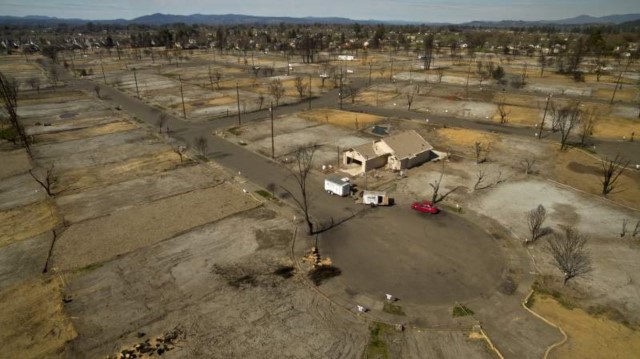Rating State Hazard Mitigation Plans
The Columbia Center for Climate Change Law released a report (and accompanying Excel database) today surveying and ranking all 50 State Hazard Mitigation Plans. The Survey considers to what extent and in what manner climate change related issues are incorporated into existing plans.
In accordance with federal law, all states must have an approved statewide hazard mitigation plan in order to receive federal disaster mitigation funding from the Federal Emergency Management Agency (FEMA).
Plans must include a description of the hazard mitigation planning process; identification of the specific hazards, risks, and vulnerabilities in the state; identification and ranking of the mitigation actions available; and description of the process to integrate mitigation efforts across agencies and levels of government. Each SHMP must be submitted to, reviewed and approved by FEMA every three years.
While climate change is affecting and will continue to affect the frequency and severity of natural hazard events, states are not yet required to include climate change in their State Hazard Mitigation Plans, and explicit consideration of climate change varies widely across the country. The Center for Climate Change Law survey identifies those state plans that address climate change and climate-related issues in an accurate and helpful manner and those that do not.
Several states will be releasing updated State Hazard Mitigation Plans in 2013 and 2014, and this survey forms a basis for improving those plans through shared lessons learned and targeted communication.
The results of the survey indicate that coastal states are more likely to include a discussion of climate change, possibly due in part to recent emphasis on and awareness of the relationship between climate change and sea level rise, coastal storms, and related hazards. The relative lack of discussion of climate change in land-locked states may point to a need for greater communication of how risks such as drought, floods, heat events, and non-coastal storms are affected by climate change. State plans that currently include climate change analyses and adaptation plans may be used as examples for improving other plans.
The report was drafted by Matthew Babcock, a Columbia student sponsored by Columbia’s Earth Institute.
The survey categorized the plans in four groups, categories one through four, with category 4 plans having the most thorough discussion of climate change impacts and adaption measures:
|
Category |
Category Description |
States |
|
4 |
Thorough discussion of climate change impacts on hazards and climate adaptation actions. |
AK,CA,CO,CT, HI, MD, MA, NH, NY, VT, WA |
|
3 |
Accurate but limited discussion of climate change and/or brief discussion with acknowledgement of need for future inclusion. |
FL, ME, MI, MN, NJ, NC, OR, RI, WV, WI |
|
2 |
Minimal mention of climate change related issues. |
AZ, AR, IL, KA, LA, OH, PA, SC, TX, UT, VA |
|
1 |
No discussion of climate change or inaccurate discussion of climate change. |
AL, DE, GA, ID, IN, IA, KT, MS, MO, MT, NE, NV, NM, ND, OK, TN, SD, WY |




